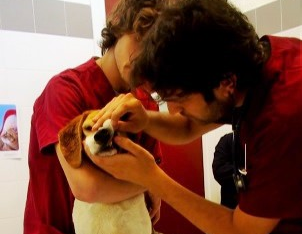Influence of low stress handling during clinical visit on physiological and behavioural indicators in adult dogs: a preliminary study
Main Article Content
Abstract
Downloads
Article Details
Authors will be the copyright proprietor of their own work although they have accepted to use a creative common license, specifically CC-Attribution-NonComercial-ShareAlike_4.0
References
Beerda, B., Schilderm M.B.H., van Hooff, J.A.R.A.M., de Vries, H.W., Mol, J.A. 1998. Behavioural, saliva cortisol and heart rate responses to different types of stimuli in dogs. Applied Animal Behavior Science 58: 365–381.
Csoltova, E., Martineau, M., Boissy, A., Gilbert, C. 2017. Behavioral and physiological reactions in dogs to a veterinary examination: Owner-dog interactions improve canine well being. Physiology and Behavior 177: 270-281.
Döring, D., Roscher, A., Scheipl, F., Küchenhoff, H., Erhard, M.H. 2009. Fear-related behaviour of dogs in veterinary practice. Veterinary Journal 182: 38–43.
Hekman, J.P., Zaras, A.Z., Dreschel, N.A. 2012. Salivary cortisol concentrations and behavior in a population of healthy dogs hospitalized for elective procedures. Applied Animal Behavior Science 141: 149-157.
Lloyd, J.K.F. 2017. Minimising Stress for Patients in the Veterinary Hospital: Why It Is Important and What Can Be Done about It. Veterinary Sciences 4(2) doi:10.3390/vetsci4020022.
Overall, K.L. 2013. Fear Factor: Is Routine Veterinary Care Contributing to Lifelong Patient Anxiety? MAGAZINE September 1.
Rexroat, J., Benish, K., Fraden, J. 1999. Clinical accuracy of Vet-TempTM instant ear thermometer: Comparative study with dogs and cats. Advances Monitor Corporation1–4.
Rizzo, M., Arfuso, F., Alberghina, D., Giudice, E., Gianesella, M., Piccione, G. 2017. Monitoring changes in body surface temperature associated with treadmill exercise in dogs by use of infrared methodology. Journal of Termal Biology 69:64-68.
Yin, S. Low Stress Handling, Restraint and Behavior Modification of Dogs and Cats: Techniques for Patients Who Love Their Visits; CattleDog Publishing: Davis, CA, USA, 2009.

